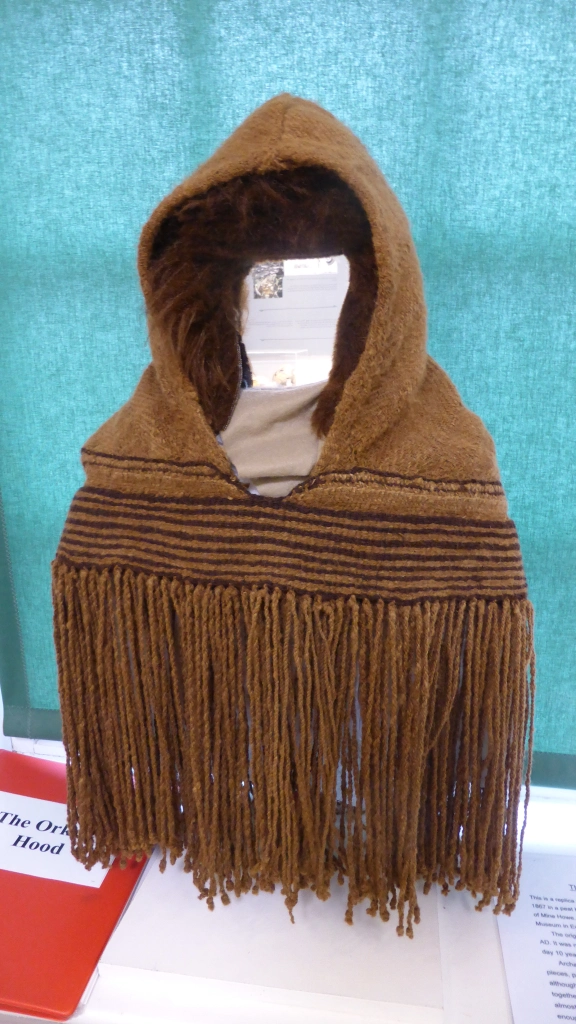Orkney’s Iron Age Hood

The woollen hood found in a Tankerness peat-moss in the 19th century has been found to date to the Late Iron Age, thanks to carbon dates obtained by the National Museum of Scotland. It seems to have been made sometime between the third and seventh centuries AD.
The replica Orkney Hood in the Orkney Museum
The head-covering part of the hood is shaped like an old-fashioned pixie hood, but it is joined on to a yoke that covers the wearer’s shoulders, and it has a long twisted fringe. Further research by experimental archaeologist Jacqui Wood has revealed fascinating details.
The hood is small and was probably made for a child of about eight or nine. The main part of the fabric is a twill weave, but the diagonal line of the twill changes direction irregularly. Careful measurements showed that at each direction change, the number of threads per inch also changed. It seems that the cloth was being woven with hand-spun yarn which varied in thickness, and the changes in direction were being used to mask these variations.
The fringe is part of a tablet-woven braid, and both the cloth and the braid must have come from other, better-made garments which must have been cut up to make this child’s hood. One imagines that the child then left the hood in the hill – maybe they were working peats? Or would the child have been herding animals? Or maybe it blew off the washing line – maybe at Minehowe? The possibilities are endless!

Sea Change
Jacqui’s discoveries about the hood were published in the proceedings of the Orkney Heritage Society’s Iron Age conference ‘Sea Change’, which took place in 2001.
The original hood is in the Museum of Scotland but the replica by Jacqui Wood is on display in the Orkney Museum.

